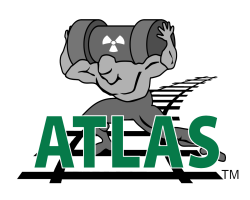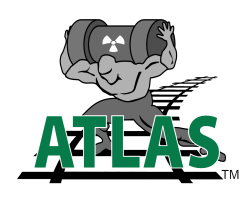Category of Content
Siting Experience Documents Only
Publication Date
Subject Matter
Keywords
M3SF-21PN020401053- COBRA-SFS Version 6.1 User Guide- A Thermal Hydraulic Analysis Code for Spent Fuel Storage and Transpor
M3SF-21PN020401053- COBRA-SFS Version 6.1 User Guide- A Thermal Hydraulic Analysis Code for Spent Fuel Storage and Transpor
M4SF-19ID020303045- Atlas Railcar Phase 3 Final Report
M4SF-19ID020303045- Atlas Railcar Phase 3 Final Report
Performance Specification for Standardized Transportation, Aging, and Disposal Canister Systems
Performance Specification for Standardized Transportation, Aging, and Disposal Canister Systems
Appendix B – Revised Railcar-to-Cradle Attachment Interface
Appendix B – Revised Railcar-to-Cradle Attachment Interface
Appendix D – Revised Conceptual Cradle Design Family 4
Appendix D – Revised Conceptual Cradle Design Family 4
Nuclear Fuels Storage and Transportation Requirements Document
Nuclear Fuels Storage and Transportation Requirements Document
Task Order 18 Updated Final Report: Generic Design for Small Standardized Transportation, Aging and Disposal Canister Systems UPDATED FINAL REPORT
Task Order 18 Updated Final Report: Generic Design for Small Standardized Transportation, Aging and Disposal Canister Systems UPDATED FINAL REPORT
Task Order 17 – Cask Design Study Final Report
Task Order 17 – Cask Design Study Final Report
Incorporating Uncertainty in RADTRAN 6.0 Input Files
Incorporating Uncertainty in RADTRAN 6.0 Input Files
ATLAS Railcar Design Project Status Report
ATLAS Railcar Design Project Status Report
DOE Atlas Railcar Project End-of-Phase 2 Final Report
DOE Atlas Railcar Project End-of-Phase 2 Final Report
Atlas Phase 2 Final Report Appendix A
Atlas Phase 2 Final Report Appendix A
This document provides a white paper detailing required changes to the DOE Atlas railcar conceptual cradle attachment components and Phase 1 conceptual cradle design due to the addition of the HI-STAR 190 SL and XL casks to the project.
Atlas Phase 3 Report - Prototype Fabrication and Delivery
Atlas Phase 3 Report - Prototype Fabrication and Delivery
The United States Department of Energy (DOE) is preparing for future large-scale transport of spent
nuclear fuel and high-level radioactive waste, which are collectively defined as High-Level Radioactive
Material (HLRM) by the Association of American Railroads (AAR). A part of this preparation includes
designing railcars to be used for the transport of HLRM.
Atlas Phase 2 Report - Preliminary Design
Atlas Phase 2 Report - Preliminary Design
The United States Department of Energy (DOE) is preparing for future large-scale transport of spent nuclear fuel and high-level radioactive waste, which are collectively defined as High-Level Radioactive Material (HLRM) by the Association of American Railroads (AAR). A part of this preparation includes designing railcars to be used for the transport of HLRM.
Transportation Planning: Indigenous Dialogue
Transportation Planning: Indigenous Dialogue
In 2019, the NWMO commissioned Maawandoon Inc to lead Indigenous Dialogue session to support NWMO’s transportation planning for the long-term care of Canada’s used nuclear fuel. This research built upon and complemented public attitude research carried out in 2017 and 2018. The research methodology consisted of 7 Indigenous dialogue sessions and attendance at 3 Indigenous Annual General Assemblies (AGA)/meetings with dialogue components.
Views and Attitudes toward Nuclear Waste: National Survey Final Report
Views and Attitudes toward Nuclear Waste: National Survey Final Report
In 2002, the federal government passed a law to create the Nuclear Waste Management Organization, also known by its initials NWMO. The Nuclear Waste Management Organization (NWMO) was established by Ontario Power Generation Inc., Hydro-Québec and New Brunswick Power Corporation in accordance with the Nuclear Fuel Waste Act (NFWA) to assume responsibility for the long-term management of Canada’s used nuclear fuel. More specifically, the NWMO’s initial objective was to recommend a long-term approach for managing used nuclear fuel produced by Canada’s electricity generators.
Communicating Risks and Benefits: An Evidence-Based User's Guide
Communicating Risks and Benefits: An Evidence-Based User's Guide
Effective risk communication is essential to the well-being of any organization and those people who depend on it. Ineffective communication can cost lives, money, and reputations. Communicating Risks and Benefits: An Evidence-Based User's Guide provides the scientific foundations for effective communication.
Going the Distance? The Safe Transport of Spent Nuclear Fuel and High-Level Radioactive Waste in the United States - Summary
Going the Distance? The Safe Transport of Spent Nuclear Fuel and High-Level Radioactive Waste in the United States - Summary
This new report from the National Research Council’s Nuclear and Radiation Studies Board (NRSB) and the Transportation Research Board reviews the risks and technical and societal concerns for the transport of spent nuclear fuel and high-level radioactive waste in the United States. Shipments are expected to increase as the U.S. Department of Energy opens a repository for spent fuel and high-level waste at Yucca Mountain, and the commercial nuclear industry considers constructing a facility in Utah for temporary storage of spent fuel from some of its nuclear waste plants.
Summary of Consolidated Interim Storage Advantages and Disadvantages from an Integrated Systems Perspective from Prior Reports and Studies
Summary of Consolidated Interim Storage Advantages and Disadvantages from an Integrated Systems Perspective from Prior Reports and Studies
The question of whether centralized storage of civilian spent nuclear fuel (SNF) should be part of the federal waste management system as an intermediate step before permanent disposal has been debated for more than four decades. Centralized storage facilities were included as a potential component of the U.S. spent fuel management system in the Nuclear Waste Policy Act of 1982 (NWPA), but the NWPA did not identify these facilities as being essential.




